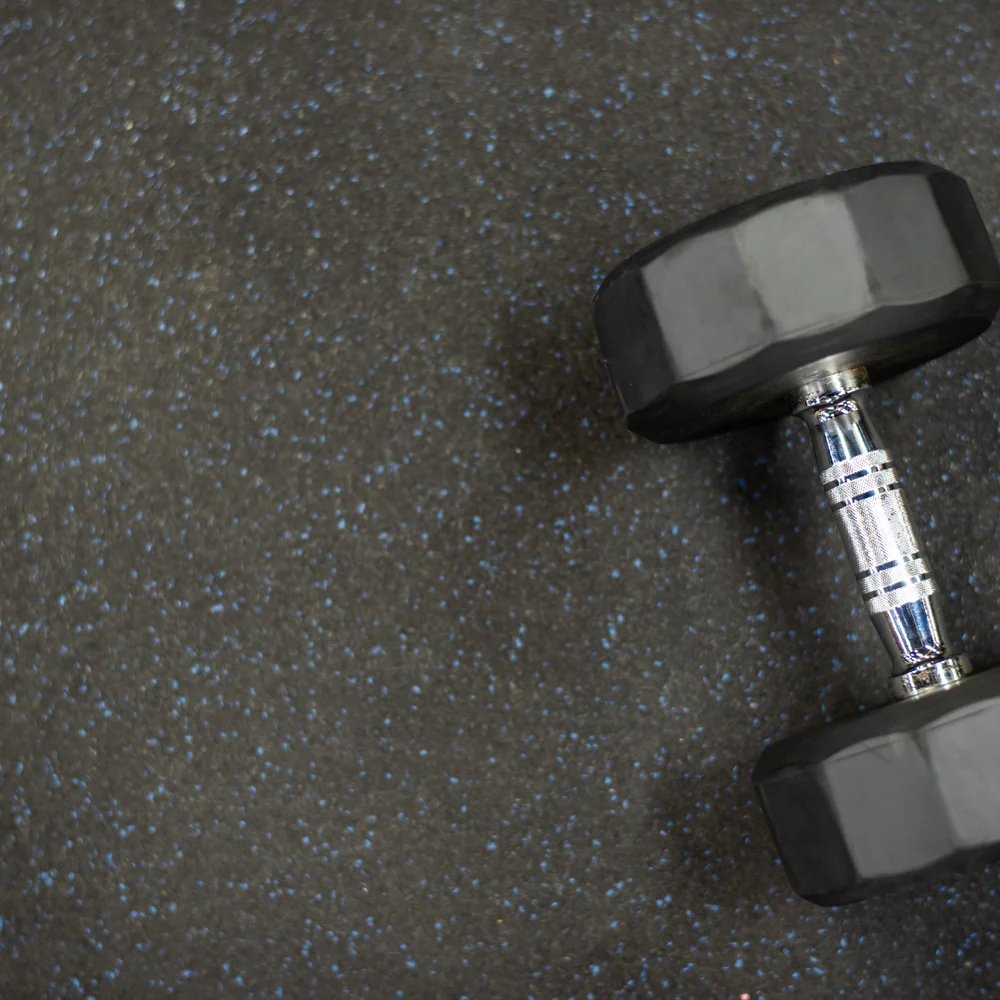Best Rubber Flooring Mats for Your Gym- Transform Your Gym Space
Creating an effective workout environment requires more than just the right equipment; the flooring plays a crucial role in your gym's functionality and safety. Rubber flooring mats are a popular choice among gym owners and fitness enthusiasts for several reasons, including durability, shock absorption, and ease of maintenance. If you're looking to transform your gym space, understanding the various types of rubber flooring mats available can help you make an informed decision.

Why Choose Rubber Flooring?
- Durability: Rubber flooring is designed to withstand heavy weights and intense workouts, making it an ideal choice for gyms. It can handle the impact of dropped weights, high-traffic areas, and the wear and tear associated with various fitness activities.
- Safety: The slip-resistant surface of rubber mats provides excellent traction, reducing the risk of accidents during workouts. This is particularly important for high-intensity training, where a secure footing is essential.
- Shock Absorption: Rubber flooring has natural cushioning properties that help absorb impact, making it easier on your joints during exercises like jumping, running, or lifting. This can help prevent injuries and improve overall comfort during workouts.
- Noise Reduction: The density of rubber mats helps in minimizing noise levels, making your gym environment more pleasant for both trainers and clients. This is especially important in multi-purpose spaces where classes and workouts may occur simultaneously.
- Easy Maintenance: Rubber flooring is straightforward to clean; most mats can be wiped down with a damp cloth or mopped with mild soap and water. This ease of maintenance is a significant advantage for busy gym owners.
Types of Rubber Flooring Mats
When choosing rubber flooring for your gym, consider the different types available:
1. Interlocking Rubber Tiles
Interlocking rubber tiles are a versatile option for gym flooring. They come in various thicknesses and designs, allowing you to customize your gym space. The interlocking design makes installation easy, and they can be replaced individually if damaged. These tiles are perfect for multipurpose areas, as they can be rearranged for different activities.
2. Rolled Rubber Flooring
Rolled rubber flooring is available in large sheets, making it ideal for covering expansive areas. This type provides a seamless look, which can be more visually appealing and easier to clean than individual tiles. Rolled rubber is particularly effective in weightlifting areas, where heavy equipment is frequently used.
3. Rubber Gym Mats
These are typically smaller, thicker mats designed for specific activities like weightlifting or yoga. They provide extra cushioning and are often used in designated zones within a gym. Rubber gym mats can also be utilized for personal training sessions or home gyms, offering flexibility in workout spaces.
4. Outdoor Rubber Flooring
If your gym space extends to outdoor areas, outdoor rubber flooring is a great option. It is weather-resistant and designed to withstand the elements while providing the same benefits of shock absorption and slip resistance as indoor mats. This type is ideal for outdoor workout stations or functional fitness zones.
Factors to Consider When Choosing Rubber Flooring
1. Thickness
The thickness of the rubber mat can significantly affect its performance. Thicker mats (typically 3/8 inch or more) offer better shock absorption, making them suitable for high-impact areas like weightlifting or HIIT zones. However, if space is a concern, thinner mats may suffice for lighter activities.
2. Density
Rubber flooring comes in different densities, which can affect its durability and feel underfoot. Higher density mats are more durable and provide better support, making them ideal for heavy equipment areas. Conversely, lower density mats are softer but may wear out faster.
3. Surface Texture
The surface texture of rubber mats influences grip and comfort. Some mats feature a smooth surface for easy mobility, while others have a textured surface for enhanced grip. Consider the type of workouts you’ll be doing to determine the best texture for your needs.
4. Aesthetics
While functionality is crucial, the aesthetic appeal of your gym shouldn’t be overlooked. Rubber flooring comes in various colors and patterns, allowing you to create an inviting and motivating workout environment.
5. Installation and Cost
Consider whether you want to tackle installation yourself or hire a professional. Interlocking tiles may be more straightforward for DIY projects, while rolled rubber might require a professional installation for larger areas. Budget is also an essential factor; while rubber flooring can be a significant investment, the long-term benefits often justify the cost.
Conclusion
Transforming your gym space with the best rubber flooring mats can significantly enhance the workout experience for you and your clients. With various options available, from interlocking tiles to rolled flooring, there’s a suitable solution for every type of gym environment. By considering factors like thickness, density, and aesthetics, you can create a safe, functional, and inviting space that motivates individuals to reach their fitness goals. Investing in quality rubber flooring not only protects your facility but also elevates the overall atmosphere of your gym, making it a place where people love to work out.


Comments
Post a Comment